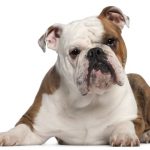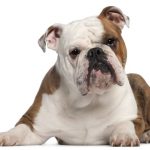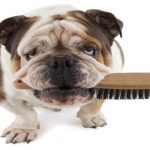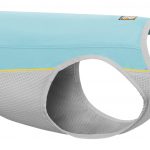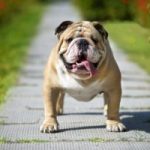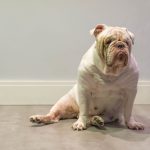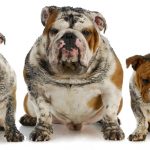In This Chapter
- Reacting to your Bully’s illness
- Spaying and neutering your Bulldog
- Identifying Bulldog ailments
- Medicating your Bully
Bulldogs are a unique breed and experience health issues that are common to the breed. This chapter highlights breedspecific conditions and how to recognize them, as well as addressing general health.
Generally, any problem that lasts longer than 24 hours needs a trip to the veterinarian. Also, any problem that gets progressively worse over several hours — such as loss of appetite, weakness, or fever — needs attention from your veterinarian.
The longer you have your Bulldog, the better you’ll be able to tell whether a stomach upset just requires some cooked meat and rice to correct it or whether you need your veterinarian, but when in doubt, make the appointment. Bulldogs are sturdy dogs, but compared to a human, they don’t weigh much. A dog can “go downhill” much faster than a human with a comparable health problem.
Spaying or Neutering Your Bulldog
When a dog has an operation to become sterile, no matter what the gender, the animal is neutered. With a female, the removal of the ovaries is a spay. With a male, the removal of the testicles is castration. Commonly, though, while the term spay is still used with females, neutering applies to the operation performed on males. So I’m using the terms spaying and neutering as opposed to spaying and castrating.
Neither spaying nor neutering is particularly hard on a healthy young dog. Spaying takes longer because the surgery is performed abdominally. Neutering is easier and quicker because the testicles are external. If you’re concerned about appearance, ask your veterinarian about a vasectomy, which is a more complicated operation.
Remember
Before any surgery, make sure that your veterinarian knows that a Bulldog may have problems breathing after the operation when the ventilating tube has been removed but the dog is not yet fully conscious.
When your Bully is neutered, he is first anesthetized; then an incision is made at the base of the scrotum, and the testicles are removed. When a female is spayed, a short incision is made in the abdomen. The veterinarian draws out the ovaries and uterus, ties off the blood vessels, cuts the uterus and ovaries free, and stitches up the incision.
With both operations, most veterinarians want to keep your Bully overnight to make sure that your dog recovers fully from the anesthetic. About ten days after the operation, you’ll return to the veterinarian to have the stitches removed.
Warning!
With a spay incision especially, keep an eye on it. If you notice any redness or puffiness, call your veterinarian. It can be a sign of infection. Also, keep an eye on your dog, and make sure she doesn’t try to remove the stitches herself before it’s time.
Tip
Watch your Bully’s weight after spaying or neutering because the metabolism does change a bit. None of my females ever gained any weight after being spayed, but after neutering, my male did start to gain weight. Cutting back his food by about half a cup got him back to his normal weight.
What to know about male Bulldogs
Sometime between 6 months and 2 years, your male dog becomes sexually mature. (It may take a Bulldog 4 years to reach full physical maturity.) He’ll start to exercise his authority a little more around the house (and the neighborhood):
– He may become more aggressive toward other males.
– He will definitely become more interested in females, especially females in season. Around such a female, he will pay more attention to her than to you. Because of this attraction, if an intact male gets loose, he’s more apt to wander farther from home than a neutered male.
– He’ll lift his leg to urinate more frequently on walks as a way to let other males know that the neighborhood is his territory.
– He may also start marking the house with his urine, which can be a hard habit to break.
Intact males are more apt to suffer from prostatic hypertrophy, which is a benign enlargement of the prostate. Neutering prevents prostate problems, may curb aggression toward other males, and may end marking in the house.
Some neutered males may continue to mark, but if marking is a problem, neutering is definitely worth a try. My male was constantly marking the furniture, and I went through rolls and rolls of paper towels and tried every cleaning product available. I was told that his behavior patterns were set and that it was unlikely that neutering would have any effect on his marking at all. When he was 6, I brought a female home, and not wanting to deal with keeping him away from her when she was in season, I had him neutered. He’s never marked since.
What to know about female Bulldogs
If you have a female, look for her to come in season sometime between 6 months and 18 months. After her first season, she will cycle about every 6 months after that. Ask your breeder about the females in her pedigree, so you’ll have a rough idea of what to expect.
A female is in season for 21 days but is receptive to a male for only 3 to 5 of those days. Females produce a bloody discharge while in heat, and how much discharge you see will vary, but you may want to keep your female in a room without carpeting while she’s in season. If you also own a male, you may want to board your female. Keeping the two separate can be difficult, as males are persistent, and 3 weeks can seem like an eternity.
If you have a fenced yard and let your female out unattended, make sure ahead of time that your fence has no holes or gaps and is high enough to prevent any wandering males from jumping in. All the boys in the neighborhood will be interested, not just other Bulldogs. If you’re walking your Bully, keep a grip on the lead, and be alert to the approach of any romantic males.
With females, besides the benefits of no unwanted litters, a spayed female has less chance of getting mammary tumors if spayed before her third season. After that, the incidence of tumors is not much different. Spaying also eliminates the risk of Pyometra, which is relatively common in Bulldogs and which can be life threatening, as well as other possible infections of the reproductive system.
Alleviating Canine Allergies
Allergies commonly occur, and you should keep an eye out for these sensitivities in your Bulldog. When you’re checking your dog for fleas and ticks, look at his skin as well. Allergies cause itchy skin, so check for red patches, scratches, or anything that isn’t clean healthy skin.
Dogs, just like people, can be allergic to food, mold, and pollen. If your dog seems to present problems during certain seasons, the allergy can be “something in the air.” If the irritation continues, try checking other sources
Figuring out food allergies
Your dog’s allergic reactions may derive from his food. If your Bully’s reaction is not too severe, you may have time to try different foods. Look at the grain in your dog food, and switch to a food with a different grain. Corn, wheat, and soy grains most generally cause allergy problems.
If your dog’s condition worsens or is severe, make a trip to the veterinarian, who may run a series of tests and also suggest a food made of all one product. These special diets have just one ingredient, such as duck, and by gradually adding other foods (a lengthy process, but a necessary one), you can eventually determine the cause of the allergy. See Chapter
Feeding Your Bulldog for more information on food allergies and options.
Flea saliva
Your dog may also be allergic to flea saliva. If a flea has bitten your Bulldog, the bite may become irritated through biting and scratching from your dog. Prolonged agitation may cause a raw, red, oozylooking spot called a hot spot.
Tip
Hot spots generally can be treated with a triple antibiotic ointment. If the spot does not get better or is left untreated, an infection can occur and then a trip to the vet will be inevitable.
Mold, pollen, fungus
Dogs, like people, can be allergic to airborne particles, such as pollen and mold and fungus spores. It can be hard to determine just what particular plant is causing the problem, other than to observe what time of the year your dog is bothered and what plants are in your area at the time. Talk to your veterinarian about whether or not your Bully may need an antihistamine.
Whether or not an allergy of any kind exists, if your Bully is continually licking or biting an area on his body, he may develop a hot spot, and you may want to get him checked out.
Preventing External Parasites
Depending on where you live and the time of year you get your Bully, you may already have encountered fleas or ticks.
Making fleas flee
Fleas are nasty little critters, and if your dog is allergic to flea saliva, they can make your pet miserable. Be aggressive when fighting fleas. In northern areas, where winter arrives with a lot of cold weather, expect a short break. If you live in a warmer climate, you face a year-round battle, but desert areas are virtually flea free.
Technical Stuff
The flea generally seen on dogs is a cat flea and is not native to this continent but is originally from Africa. It is becoming resistant to many flea-control products on the market.
If your dog is scratching, and you suspect fleas, check any white areas of fur and push the hair against the grain, or turn your dog over and check toward the hind legs, where the fur is thinner. When you push the hair away from the body, you may see a flea or two running for cover. If you don’t see any fleas, check for small flecks of flea dirt. If you can’t tell if what you’re looking at is flea dirt or just a bit of regular dirt, collect some on a piece of paper or a paper towel, and wet it. If it turns red, it’s flea dirt. Flea dirt is flea excrement, and it turns red from the blood it’s been enjoying from your dog.
If you don’t see anything on your dog but still suspect fleas, run a flea comb through your dog’s coat. Flea combs have very fine, closely set teeth that trap fleas and flea dirt.
Fighting fleas with medicine
After you’ve determined that your dog has fleas, the war has begun. If your dog has a heavy infestation, start with a bath using a flea-fighting shampoo. Wash all bedding, as that is where the fleas lay their eggs.
If you decide to use a topical flea preventive, your veterinarian can help you choose the one for your dog. Many different products are sold on the market and through your veterinarian that can help you eliminate fleas:
– Program: Ingested monthly, this medication may be used safely with other flea-control products. Program acts as a birth-control method for fleas. The flea absorbs the medication from the blood of your dog, and Program prevents a cocoon from forming, so the flea larvae never develop into adults.
– Frontline: This topical preventive for fleas also fights ticks for 17 days.
– Advantage: I use Advantage, another monthly topical preventive, and have had good luck with it.
If heavy infestation occurs, bathe your dog with a flea-fighting shampoo before trying the topical medications. For your home, you should consider hiring an extermination company that specializes in fleas.
If you’d like to fight the fleas with fewer chemicals, try feeding your Bulldog garlic several times a week. You can buy garlic capsules, and most dogs love garlic, even if it doesn’t repel the fleas. You can have too much of a good thing, however, so don’t overdo the garlic.
Keeping the house and yard clean
Daily vacuuming works just as effectively as any spray in keeping the flea population down in the house. You can cut up a flea collar and put it in the vacuum bag to help kill the fleas. Also, change the vacuum bag frequently (when the bag is half full) to prevent a flea colony from growing in the bag. Wash your dog’s bed, where most of the flea eggs accumulate, frequently. Combing your dog with a flea comb also helps trap the unwanted guests.
Help keep your yard flea free by planting marigolds. You can also use diatomaceous earth inside and out. Diatomaceous earth helps dehydrate the fleas.
Avon’s Skin-So-Soft control bugs, even though the product was not invented as a bug repellent. Don’t overdo it, but a light application helps control the blood-sucking pests. Be sure to monitor your dog in case he reacts to the Skin-So-Soft. Exchanging fleas for a rash is not the point in eliminating fleas.
Flea collars tend to keep your dog’s neck free of fleas but don’t do much over the rest of the body. You can, however, cut up a flea collar and put it in your vacuum bag to help kill fleas that you suck up. Change the vacuum bag frequently, or you’ll end up with a flea colony in the bag.
Getting ticked off
Ticks may be a problem in your area. If you take long walks in tall grass or through brush, the likelihood of picking up ticks increases (for both you and your dog). Most ticks are relatively small, and you may find them on your dog by touch faster than by sight. Ticks feast on your dog’s blood and create a large, dark bump buried in his fur. The bump is actually the tick itself.
Checking your dog regularly for ticks prevents further health problems for your dog. Don’t leave ticks on your dog. Ticks can be hard to find even on a short-coated dog like the Bulldog, so be patient and thorough. If you don’t think that you can get the tick off properly or just don’t want to try, make an appointment to visit the veterinarian so he can perform the procedure.
Tip
Place a touch of rubbing alcohol on the tick to shut down the oxygen supply, and the tick may back out of your dog on its own.
You can remove ticks gently with tweezers, being extremely careful not to leave the head behind. Follow these procedures:
1. Grasp the tick with the tweezers where the mouth parts enter the skin.
Don’t use your fingers.
2. Pull steadily and slowly until the tick comes away from the dog.
Dispose of the tick so that it can no longer affect your dog or your family.
3. Wash the site after the tick has been removed.
Warning!
Never use a cigarette or burning agents to extract a tick. Undoubtedly, you would get the tick’s attention, but you are also apt to burn your dog.
Four types of ticks can affect your dog: the Rocky Mountain wood tick, the American dog tick, the brown dog tick, and the deer tick. All of these ticks, with the exception of the deer tick, are the size of a watermelon seed. The deer tick is the size of a freckle. The Rocky Mountain wood tick is a more robust, husky tick with a rounded, thicker body.
The following diseases or conditions are spread by ticks:
– Rocky Mountain spotted fever: This disease is spread by the Rocky Mountain wood tick; this tick has been found in almost every state and in Canada. Symptoms can include fever, lethargy, vomiting, refusing food, and skin rashes.
– Tularemia: Highly infectious, tularemia is also considered a potential biological-warfare agent. Tularemia occurs naturally throughout the United States. Most cases have been reported from the central states of Missouri, Arkansas, and Oklahoma. There has been a decline in the number of cases over the past several decades. This disease is spread by the American dog tick.
– Tick paralysis: Certain ticks can cause a progressive paralysis, which is reversed upon removal of the tick. Recovery is usually complete. The paralysis isn’t caused by a disease pathogen but by a toxin produced by the tick. Paralysis begins in the extremities of the body with a loss of coordination. It progresses to the face, with corresponding slurred speech and, finally, shallow, irregular breathing. Failure to remove the tick can result in death by respiratory failure. Most cases of tick paralysis are caused by the Rocky Mountain wood tick in northwestern states. The American dog tick has also been known to cause tick paralysis.
– Human ehrlichiosis: This is a human disease that can also affect dogs. The disease causes fever, nausea, vomiting, rash, and weight loss. This is carried by the brown dog tick and the deer tick.
– Human babesiosis: This disease causes hemolytic anemia. The disease is most dangerous to puppies. Attachment to people is uncommon. Babesiosis is a malarialike illness caused mainly by Babesia microti, a protozoan parasite of red blood cells. Signs and symptoms include fever, fatigue, chills, sweats, headache, and muscle pain, beginning usually 1 to 6 weeks after the tick bite. This is carried by the brown dog tick and the deer tick.
– Lyme disease: This disease is spread by deer ticks. Ask your vet if this presents a concern in your area. You can obtain a vaccine for Lyme disease. Symptoms include a rash, usually spreading outward from the tick bite; muscle stiffness; and lethargy.
Ear mites
If your Bully is scratching his ears constantly, or rubbing his head along the carpet or a piece of furniture, make an appointment with your veterinarian, and have him check your dog’s ears. Because ear mites can live on other areas of the body as well as the ears, you may need to dust your Bulldog with flea powder or have him sprayed or dipped for 3 to 4 weeks, which covers the 3-week life cycle of the mite. Ear mites are more common in cats than in dogs, so this problem may not occur for you and your Bully.
Mange
Two types of mange exist that can affect your Bully, and tiny mites cause both types. Sarcoptic mange is most noted by intense itching, and as the mange advances, skin lesions and hair loss occur. Sarcoptic mange is treated externally with sulfur dips and internally with ivermectin. Revolution, a monthly flea and tick preventive, is also an effective treatment. Treatment lasts 3 weeks, and your Bulldog’s bedding should be thoroughly disinfected or thrown away.
Demodetic mange is passed from the mother to the puppies and affects puppies between the ages of 3 and 10 months. Demodetic mange is diagnosed by examining skin scrapings. This form of mange doesn’t cause the intense itching that Sarcoptic mange does. With Demodetic mange, your dog may experience hair loss.
Your veterinarian uses ivermectin to treat Demodetic mange and may also recommend a special shampoo. If the mange isn’t widespread, it may go away on its own, but if it spreads beyond small, localized areas, it may need up to a year of treatment. Bulldogs with compromised immune systems may be susceptible to Demodetic mange their entire lives.
Guarding Against Internal Parasites
You can’t see an internal parasite by rubbing your dog’s fur the wrong way. Your veterinarian wants to do a fecal check once or twice a year to check for whipworms, hookworms, tapeworms, and roundworms. Heartworms require a blood test, and tapeworm segments are usually evident with the naked eye.
Tapeworms
Tapeworms are the least harmful, but most common, of all the types of worms that may infest your Bulldog. One of the ways your dog can get tapeworms is by swallowing a flea, so controlling the flea population prevents tapeworms in your dog. Tapeworm segments look like tiny grains of rice in your dog’s stool, so check periodically for this evidence of tapeworms. If you never treated for tapeworm, your dog would survive, but any parasite takes nourishment away from its host, so your dog would want more and more food.
Hookworms
Hookworm eggs pass through feces and can live in the soil. They also pass from a mother to her puppies. Instead of maturing, the larvae live in the female and then pass to the puppies through their mother’s milk. Hookworms feed on the blood of their host and can cause fatal anemia in puppies. Untreated adult dogs will become anemic, and the constant irritation from the worms can cause gastroenteritis, or inflammation of the bowel, which may cause diarrhea and lessens the amount of nourishment the dog can get from food.
Roundworms
Roundworms, like hookworms, can contaminate the soil, and the eggs are highly resistant to adverse conditions. Roundworms live in soil for years. Most puppies are born with these worms because the larvae live in the mother but don’t infect her. Even if your female Bully tests negative for roundworms, her puppies can still have them. Roundworms in puppies can cause death from intestinal blockage, and if the worms migrate to the lungs, they may cause pneumonia. Adult dogs may have diarrhea and abdominal pain, and may suffer from dehydration.
Whipworms
Whipworms can cause a deep inflammation of the colon. If your Bulldog has periodic bouts of diarrhea, with blood and mucus present, whipworms may be the culprit. Left untreated, your Bully will become dehydrated, and the inflammation of the colon will become worse. He may suffer abdominal pain, become anemic, and lose weight. Once again, contaminated soil is to blame, and the bad news is that after you have whipworms in your soil, paving the entire yard is about the only way to solve the problem. Protect your Bully with periodic fecal checks.
Heartworms
Heartworm is a deadly parasite that doesn’t show up in fecal checks but requires a blood test. This parasite can kill or incapacitate your dog, and the cure can be almost as bad as the disease, so preventing heartworm is better than having to cure it.
Heartworm larvae develop in mosquitoes and enter a dog’s bloodstream when a mosquito bites the dog. These larvae then move to the chambers on the right side of the dog’s heart. Once in the heart, the worms mature and produce microfilariae, which circulate in the blood until another mosquito picks them up after feeding on the dog. Adult heartworms can completely fill the heart chambers. An infected dog may tire easily and develop a cough.
The annual blood test by your vet detects the presence of microfilariae. Talk to your veterinarian about a monthly heartworm preventive for your dog. Some medications prevent only heartworm; some also include chemicals that kill other worms, such as hookworms. A shot is also available that is effective for up to 6 months.
Tip
If you live in an area with a short mosquito season or no mosquitoes at all, you may opt not to give your Bully any medication, but just have him tested every 6 months to see if he’s infected.
If your dog does contract heartworm, the first step in the cure is to get rid of the adult worms, which involves arsenamide injected intravenously twice a day for 2 or 3 days. Your vet can do this for you or show you what you need to do. The worms in the heart die slowly and travel to the lungs through the bloodstream. The worms gradually disintegrate in the lungs. The worms must be poisoned slowly, because if all the worms were killed immediately, simultaneous embolism can prove fatal to your dog. Even killing the worms slowly stresses your Bulldog’s lungs and may cause permanent damage. Enforced rest for 4 to 6 weeks following treatment is usual to help your Bully recover.
Recognizing Skin Problems
Bulldogs are very susceptible to skin problems, so if you notice your dog scratching or licking, or if you observe any hair loss, redness of skin, or a rash, have your veterinarian check your dog before the problem gets worse. Most skin problems can be cured or kept under control with medications, especially if they are not allowed to spread. Check with your vet to make sure your dog’s skin problems aren’t being caused by parasites or allergies, discussed earlier in the chapter.
Hot spots are raw, oozy round patches of skin and are created when your dog bites and licks a bug bite or an itchy spot. These spots need to be treated before they become infected. Hot spots are not limited to Bulldogs but are common enough to cause problems.
Tip
Use a dab of triple antibiotic cream, available at any drugstore, on hot spots. If the spot doesn’t clear up in three or four days, see your veterinarian, who may want to prescribe an oral antibiotic. For more information, also see Chapter Grooming Your Bulldog.
Taking Care of Interdigital Cysts
Interdigital cysts may be caused by almost anything that gets caught between a dog’s toes and starts to work its way into the skin, but Bulldogs are quite likely to get interdigital cysts because of the short hairs between their toes. These short hairs can get bent backward into their roots, and the irritation to the skin results in a cyst, frequently filled with pus. The cysts can be painful, and you may notice your Bulldog limping, or constantly licking or biting his toes. There is a danger of bacterial infection if the cyst is left untreated.
Check with your veterinarian if your Bully gets a cyst. With time, your veterinarian may recommend ways to treat the cyst at home, and once you’ve dealt with a few of the cysts, you’ll get to know how to deal with them yourself and when you need to have your dog looked at by a professional:
– Many Bulldog breeders soak the infected paw in warm water with Epsom salts or with an antibiotic solution added.
– Soak the paw for about 10 minutes. If your Bulldog won’t agree to have one paw in a pan of water, use the bathtub. The treatment won’t do any harm to the other paws.
– After drying the paw, apply an antibiotic ointment to the cyst.
Some people use Preparation H, which seems to help. Some breeders pop small cysts before they have time to grow to a size that irritates the dog, but if you think that’s what you want to do, make sure the area is clean, and watch closely for infection.
Knowing the Truth about Bulldog Breathing Problems
Bulldogs have the unfortunate reputation for having breathing problems, associated with small tracheas, elongated soft palates, or stenotic nares. Not all Bulldogs have breathing problems. Conscientious breeders are working hard to correct these problems. However, your Bully may be affected by one or more of these problems, and it’s a good idea to understand them and to know what you can do to help your dog breathe easier.
Elongated soft palate
The soft palate is the soft extension of the roof of the mouth that forms a flexible barrier and prevents food and water from going up the nose when your Bulldog swallows. (See Figure 14-1.) Fold your tongue back in your own mouth, and you can feel your soft palate. In many Bulldogs, this soft flap extends back into the throat and can fall into the larynx when the dog breathes in. If your Bully becomes excited or stressed and is breathing hard, the soft palate gets longer and swells. Then your Bully is faced with the vicious cycle of trying harder and harder to get air, and the airway becoming more and more blocked.
Figure 14-1: An elongated palate makes it harder for your Bulldog to breathe.
This phenomenon is why heatstroke is such a danger (and I mention it so much), even when you may not think the weather is hot. The soft-palate problem is also why you shouldn’t get into battles of will with your Bulldog. Bulldogs are bred to be tenacious and determined, but that can work against them because they won’t give up and continue to fight. If you are trying to work with your Bully to get him to do something, like let you cut his nails, don’Tip keep struggling. The struggle can cause greater problems.
The elongated soft palate can be surgically corrected. Laser surgery makes the process quick, and less bleeding and swelling occurs with laser surgery than with other methods. Talk to your veterinarian about whether she recommends this surgery for your Bulldog.
Warning!
Elongated-soft-palate surgery sounds simple but is actually quite an art form, and complications can be dangerous. Owners should seek out a veterinarian with a history of performing the surgery successfully and with the desired results.
Small trachea
Besides the breathing problems caused by an elongated palate, Bulldogs may have extremely small tracheas, sometimes only the size of a pencil in diameter. Breeders are working to correct this problem, so your Bully may have a trachea that is normal for his size and weight, but you should be aware that it may be a problem.
Tip
Carry a little squirt bottle filled with lemon juice and water. Lemon juice cuts the phlegm that can build up in your dog’s throat as a result of the elongated soft palate and the small trachea.
Stenotic nares
Stenotic nares is the technical term for pinched nostrils, and most Bulldogs are born with this condition. The opening of their nostrils is narrow, and the separating cartilage is soft. So when the dog breathes, the cartilage closes in, further decreasing the size of the opening for air. Your veterinarian can easily remove a small piece of the wall of each nostril so your Bully can breathe easier.
Being overweight
Breathing problems increase the heavier your dog is. Don’t let your Bully get overweight. Bulldogs are no more prone to being overweight than another dog, but because Bulldogs are more laid back than many breeds, they may not get the exercise they need to burn the food they are given. Extra pounds aren’t good for any dog. You should be able to feel your Bully’s ribs when you run your hands down his sides. If you can’t feel them, it’s time to cut back on a snack or two.
Handling Heatstroke
I mention heatstroke in Chapter
Familiarizing Yourself with Fido First Aid, on first aid, but it’s here (and throughout the book) too because various situations can lead to your dog’s overheating, and heat can kill your Bully.
Technical Stuff
All dogs cool off by panting. By breathing quickly, Bulldogs exchange the hotter air in their lungs for the cooler outside air. The air moving over the tongue also helps in the cooling process, and this process allows for some heat exchange. The tongue is full of blood vessels close to the surface, and the cooler air hits the blood vessels and cools the blood that is then sent to the rest of the body. This process of panting eventually cools the entire body.
Some Bulldogs cannot exchange air as fast as other dogs because of their narrow tracheas and the shape of their noses. When heatstroke occurs, they begin to pant more rapidly. This panting may add stress, which can cause swelling of the throat, making panting less and less effective as a way for your Bully to cool off.
Tip
Bulldogs are cute puppies, and the attention you get when you take your Bully out in public may be nice, but use common sense when you care for and travel with your Bully:
– Put some ice cubes in your Bully’s water dish. He’ll enjoy fishing them out, and the ice keeps him cool.
– Give your Bully frozen treats instead of regular dog treats from time to time. Freeze meat-based broth in ice cube trays, and pop one out for a treat a couple times a day.
– Never leave your dog outside unattended on a hot day. Your dog may love to go with you in the car, but if it’s a hot day, leave him at home. Even with the windows down, a car in summer can be too hot for a Bulldog.
– During the summer months, carry a squirt bottle of water with you.
– Invest in a cooling jacket for your Bully.
– Don’t take your Bully to the beach. (You can return his water wings now.)
– Don’t go jogging with your Bully. You can take your Bully for walks, and I hope you do, but be aware of his panting and level of energy.
– Monitor his activity. For instance, if he has a favorite toy, take it away from him before he gets too warm playing.
If your Bulldog is panting or slobbering excessively, has diarrhea or is vomiting, or if he’s collapsed, heatstroke can be the cause. Move your dog to the shade, and soak him with cold water. Give him small amounts of water to drink. If your dog is unconscious, get him to the veterinarian immediately.
Eyeballing Eye Problems
Your Bulldog may live his life and never have an eye problem, or he may have one or more of the following. Knowing what to look for and taking prompt action with a veterinary visit will help protect your Bully’s vision and prevent discomfort.
Eyelid issues
Eyelid problems are the most common eye problems in almost every breed, and fortunately, they are the easiest to correct if caught early. They can be very painful, though, so prompt attention is necessary.
All those lovely wrinkles that give a Bulldog his special look may also be the cause of two types of eyelid problems: entropion (the inward turning of the lower eyelid) and ectropion (the outward turning of the lower eyelid). Fortunately, both of these conditions are easily corrected with surgery.
Entropion eyelids
With entropion, the eyelashes rub against the cornea. The cornea becomes severely irritated or damaged as the chronic abrasion wears away the corneal surface. In some cases, deep ulcers form in the cornea, even to the point of rupturing its surface. This damage quickly leads to inner eye infections and potential blindness. After diagnosis, surgery is the only treatment.
Several different surgery techniques are available, but typically, a small incision is made below the lid and a small portion of skin is removed, and when the two sides of the incision are sutured, the incision pulls the border of the lid downward into a normal position. Antibiotic ointments may be applied if infections are present.
In rare cases, the upper lid can also be affected to some extent. One or both eyes may be involved. Most dogs with entropion squint and have a reddened, inflamed eye. Because of the pain involved, dogs tend to scratch the eye, possibly doing further damage. Left untreated, severe eye infections may develop.
Ectropion eyelids
Ectropion describes a condition where the lower lids are loose, causing a drooping of the eyelid’s margins. The lower lids actually turn outward. With ectropion, part of the inner eyelid is exposed and can become inflamed. Also, ectropion, if not corrected, can reduce the amount of tears produced. As the lower lid sags downward, the underlying conjunctiva is exposed. An eyelid pouch forms, allowing pollens, grasses, dust, and so on to accumulate and rub against the sensitive conjunctiva — a consistent source of irritation for your Bully — leading to increased redness of the conjunctiva and occasional watering of the eye, which then spills out over the lower lid and face.
Many Bulldogs live normal lives with ectropion. However, some develop repeated eye infections due to the collection of air particles. The risks are minor except in severe cases, where secondary eye infections may develop. Some Bullies require no treatment; however, if eye irritations develop, medical attention is advisable. Mild cases can be treated with eye drops or salves to alleviate irritations and/or infections when they occur. In severe cases, a surgical procedure is preferred, which removes excess tissue, thereby tightening the lids and removing the abnormal pocket.
Cherry eye
Cherry eye is a condition in which a gland attached to the third eyelid — the membrane that covers the eye sideways — gets inflamed and becomes a red, swollen mass in the inside corner of the eye. The cure used to be removing the third eyelid, but removal frequently led to dry eye, so now, the membrane is tacked back into its correct position.
Warning!
Because of the shape of a Bulldog’s head, only a board-certified ophthalmologist should perform this surgery.
Dry eye
Dry eye is just what it sounds like. The eye, for whatever reason, doesn’t produce tears. The condition can lead to blindness if not treated, and the treatment is usually eye drops and either Cyclosporin or Tacrolimus. Some dogs will need eye drops for the rest of their lives; some will begin producing their own tears again, and the drops can be stopped. See Chapter
Caring for Your Senior Bulldog for more information.
Getting Hip to Hip Dysplasia
Hip dysplasia is the abnormal development of the head of the femur. Instead of fitting properly in the socket of the hip joint, the femur fits loosely and may come out of the socket altogether. Considerable swelling and ruptured ligaments may occur. A dog with hip dysplasia may develop arthritis in the joints and may also be lame and in pain.
Hip-replacement surgery is an option. In many breeds, breeders have their dogs x-rayed to determine the quality of the hips. The x-rays are studied and given a rating by either the Orthopedic Foundation for Animals (OFA) or by the University of Pennsylvania Hip Improvement Program (PennHip).
Technical Stuff
Most Bulldog breeders do not x-ray hips, and it is likely that your Bulldog will have hip dysplasia. Bulldogs hips are generally dysplastic on x-rays, but this rarely causes clinical problems for the dog. The Bulldog’s unique musculature supports the hip in a way that is not seen in most other breeds. Most rear-leg lameness in Bulldogs will originate in the knee or stifle, and owners and vets should not be led astray by the hips’ appearance on x-rays.
Because one of the signs of hip dysplasia can be a rolling gait, many people believe that this is what gives the Bulldog his distinctive gait. In fact, Bulldogs have such a gait because of their general build. The wide, heavy front and the narrower, lighter hindquarters give the Bully his distinctive gait, not badly formed hip joints.
It Hurts When I Sit! Ingrown Tails
If your dog has an ingrown tail, the tail grows backward and down. This awkward growth creates a deep pocket and can be painful and infected. If your dog has an ingrown tail, you’ll need to pay special attention to keeping the area clean and dry. In severe cases, the tail is amputated.
The tail end of the discussion: The standard for the Bulldog says that the tail may be either straight or screwed, but breeders disagree and say that the tail should be straight. The reasoning is that the tail is an extension of the spine. Says one breeder–veterinarian, “If the tail isn’t wagging, the spine isn’t normal.”
Speaking of Spines: Hemi-vertebrae
Hemi-vertebrae are vertebrae that are malformed, looking more like triangles than blocks. A Bulldog may have malformed vertebrae and be just fine, but some will start to have trouble walking at around 5 months old and will eventually not be able to walk at all.
Patellar Luxation
Patellar luxation is the partial or complete dislocation of the patella, or kneecap. The kneecap normally fits into a groove in the thigh bone. The kneecap may slip out of the groove because the groove is malformed, which can be hereditary, or the kneecap may slip as the result of a fall or a blow to the leg. When the kneecap is out of the groove, your dog will limp. The kneecap may pop back into the groove on its own, or your veterinarian may be able to push it back. Severe cases will require surgery. Left untreated, your dog can develop osteoarthritis in the joint.
by Susan M.Ewing



